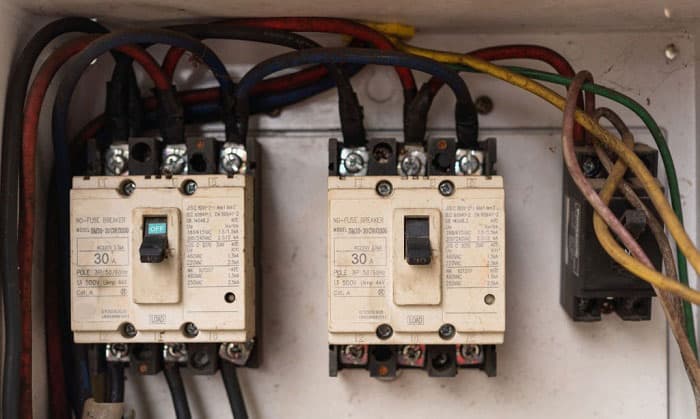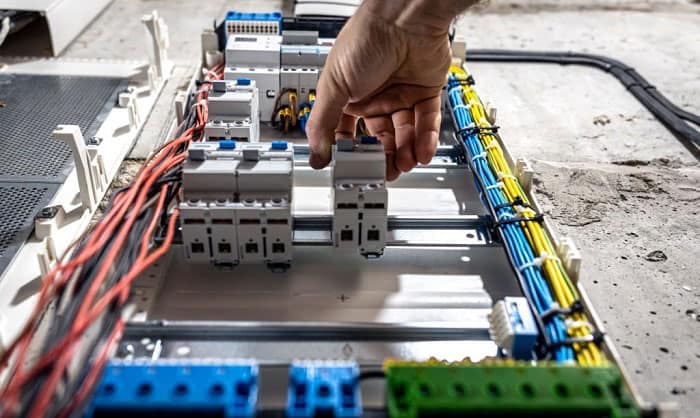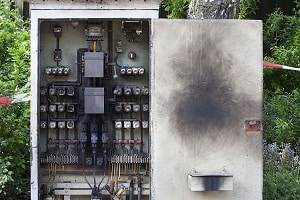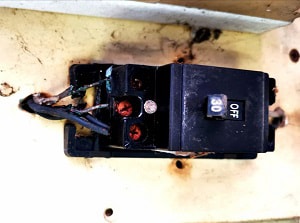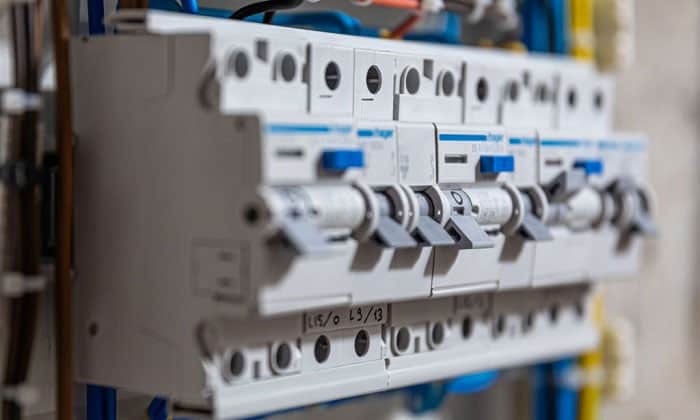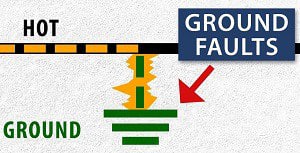Can a circuit breaker fail without tripping? Yes. Such an incident defeats the breaker’s purpose as a safety device and can impose a great risk for you and your family. To resolve this, the best thing to do is to consult an experienced electrician.
However, if you’re planning to lessen the expenses, you can perform a safe troubleshoot that only involves observation. So bring a multimeter with you because here are the possible reasons you should consider in examining a circuit breaker that fails to trip.
Table of Contents
Circuit Breaker Needs Replacement
1. The Breaker Was Overloaded
The first thing we should always check is the circuit breaker itself. Observe how the electricity in your home acts up as this type of circuit breaker failure occurs. If your home keeps losing power without tripping breaker, then you’re facing the consequence of an overload.
Overloading may not result in a bad breaker right away, but overtime, it can damage the internal parts of your device, causing it to stop functioning and tripping.
Trace the circuit connected to that specific breaker and know what the devices are connected to it. Are there any particular appliances that draw a significant amount of current for your circuit to overload? Washing machines, electric dishwashers, and microwave ovens are a few examples.
Including the light receptacles, compute the total amperage used in your circuit and compare it with the maximum continuous load of the circuit breaker, which is 80% of the breaker’s total rating. If your electrical devices exceed more than what the CB can handle, then you’ve been overloading your circuit the whole time.
2. Visible Signs of Deterioration
A circuit breaker doesn’t last forever, and it will always come to a point where your safety device will break down. According to the Consumer Product Safety Commission (CPSC), the lifespan of circuit breakers is about 30 to 40 years, depending on the product and how the homeowner uses it.
So if you have an old breaker dilemma, it won’t be surprising if the power goes off but the breaker doesn’t trip. The signs of wear-offs and corrosion spots can greatly affect the switch’s ability to turn off as soon as the CB detects an electrical anomaly.
Also, deterioration leads to a series of breaker problems that can impose danger for your property and safety. If the CB has cracks or small gaps, it can reveal the internal parts, and the chances are high for a person to get electrocuted. Do not disregard the signs of instability of an old circuit breaker. Replace it straightaway.
3. Scorching Hot Circuit Breaker
If your breaker damages itself already because it burns by its own temperature, change it immediately. You may notice this as soon as you walk to the area where your load center is. You’ll sense a burning smell, or worse, smoke coming out from the box.
When this happens, the breaker will show signs of melted parts or burnt areas. The CB is also now hot-to-touch, so avoid contact and turn off the main breaker as soon as possible. Please take note that a breaker should never feel hot under its natural working condition.
The reason behind this circuit breaker combustion is overheating. When a circuit overloads and the breaker doesn’t detect the issue, the power source will continue to feed the wiring until it burns out.
A burning circuit breaker is a worst-case scenario when it fails without tripping. Calling for professional assistance is highly advised in this scenario. An experienced electrician will provide the appropriate service —it may not only require a CB change, especially if there’s smoke.
4. The Switch’s Stuck
On the flip side, if there are no burnt spots around your breaker, the latch of your circuit breaker may be the problem.
Your electrician should pull the problematic CB from its socket and see what’s causing the switch to stay stuck on the “ON” position, finding out why the breaker doesn’t trip but no power flows through its circuits. I discourage you from doing this procedure because it will involve only a contractor’s tools and expertise.
These factors I’ve stated sum up into one primary problem: you have one faulty circuit breaker.
If your circuit breaker has one of the problems above, it’s a must to replace the device real quick. Don’t wait for it to get ugly and burn your house down. It is much better to invest in a pricier CB that provides excellent quality than to keep reusing the faulty old ones.
Wiring Issues
Sometimes it’s not always about a failing circuit breaker. The wiring of your circuit contributes to the function of a breaker. Try to trace the wiring from the CB to the series of circuits connected to it.
A short circuit can happen if there’s any exposed wire, which typically results from rats or accidental damages. When a neutral and hot wire interacts, too much or too little amount of electricity can damage the breaker.
If this continues to happen in the long run, the breaker’s internal damage from constant overheating can kill the power without a breaker trip. That’s why you should also check your wiring.
Now, overheating does not happen coincidentally, and there’s always a reason behind it. Like your breaker, the wiring should also suit the load it is supposed to manage. Incompatibility between the two causes temperature rise, so here are the sizes of wires and their respective breaker amperes:
- 20-amp circuit breaker = 12-gauge wiring
- 30-amp circuit breaker = 10-gauge wiring
- 40-amp circuit breaker = 8-gauge wiring
- 50-amp circuit breaker = 6-gauge wiring
- 60-amp circuit breaker = 4-gauge wiring
If you’re having a CB replacement, ensure that your wire size matches the load size of your entire electrical system. Doing this can prolong the lifespan of the breaker because it will not have a hard time conducting electricity, making it work under a perfect temperature.
Other Factors
1. High-power Devices
When you use an appliance, know how much current it pulls from the circuitry and breaker. Power irregularities like ground faults and circuit overloads can make an outlet stop working breaker not tripped.
A ground fault usually happens in the kitchen and bathroom. If your electric stove, dishwasher, or hair dryer constantly creates this fault, it will take a toll on the circuit breaker. And just like an electrical short and circuit overload, it can damage the breaker until the tripping mechanism doesn’t work anymore.
2. Check the Main Breaker Panel
Another reason why can a circuit breaker be bad without tripping is because of where the CB settles, the main breaker panel. You may have a busted busbar or a loose connection, making the stream of electricity unstable, or maybe the breaker’s slot has been damaged or deteriorated with time.
Let your trusted electrician take a peek at your load center. Perhaps the previous service provider misplaced your CB on a faulty busbar, or there’s a loose connection behind your breaker from the principal power source.
Conclusion
The answer is yes to the question: “Can a circuit breaker fail without tripping?” The possible reasons you should consider are faulty/loose wirings, short circuits, circuit overloading, ground faults, and of course, a circuit breaker that went bad.
The step you’ll need to do in this situation is to change the circuit breaker firsthand. However, an electrician’s opinion about this matter is crucial for eradicating other possible defects in your electrical system.
Do not wait for your breaker to heat up and start smoking. Switch off the main breaker and call for a professional who can fix the situation ASAP.

I am Edwin Jones, in charge of designing content for Galvinpower. I aspire to use my experiences in marketing to create reliable and necessary information to help our readers. It has been fun to work with Andrew and apply his incredible knowledge to our content.

